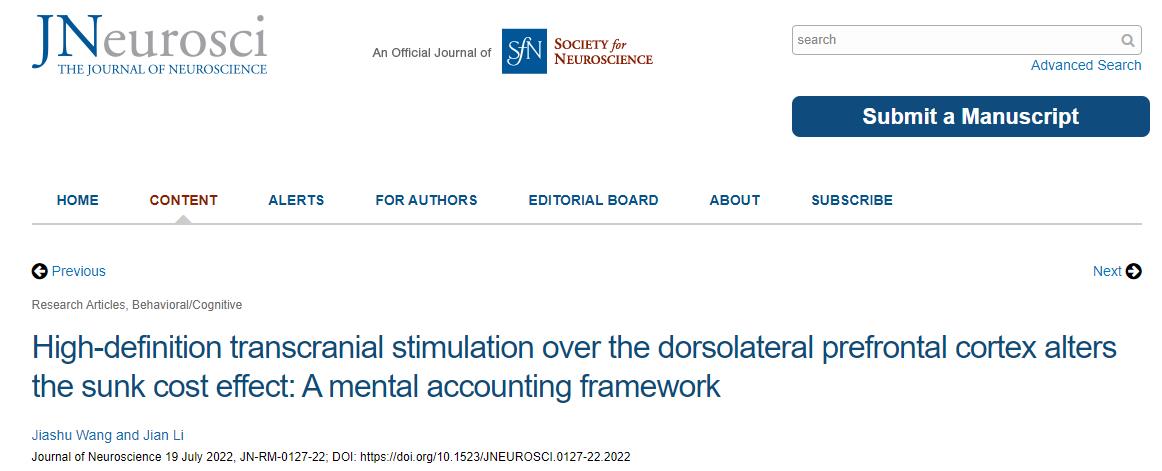Dr. Jian Li: High-definition transcranial stimulation over the dorsolateral prefrontal cortex alters the sunk cost effect: A mental accounting framework

Abstract
The sunk cost effect refers to the fact that human decisions are consistently influenced by previous irrecoverable and irrelevant costs. Recent neuroimaging experiments suggest that the dorsolateral prefrontal cortex (dlPFC) plays a pivotal role in the sunk cost effect yet the causal and neurocomputational role of the dlPFC remains elusive. In this study, two cohorts of healthy human male and female adults were recruited to complete a novel two-step decision-making task during the anodal-sham or cathodal-sham high-definition transcranial direct current stimulation (HD-tDCS) over the dlPFC, respectively. Consistent with previous studies, we showed that the sunk cost deterred participants from making further investment and therefore engendered a de-escalation effect. Such behavior can be captured by a weighted mental accounting model with a recalibrated reference point in which the direction and magnitude of the sunk cost effects hinge on the decision weights apportioned to the option values. Interestingly, transcranial stimulation did not influence participants’ initial willingness to incur sunk costs but only altered sunk costs’ downstream effects. Specifically, anodal stimulation over the right dlPFC amplified the de-escalation effect of sunk costs whereas cathodal stimulation yielded the opposite result. HD-tDCS also changed the decision weights of the mental accounting model, providing a causal and computational link between prefrontal cortex and sunk cost effects.
Original link: https://doi.org/10.1523/JNEUROSCI.0127-22.2022